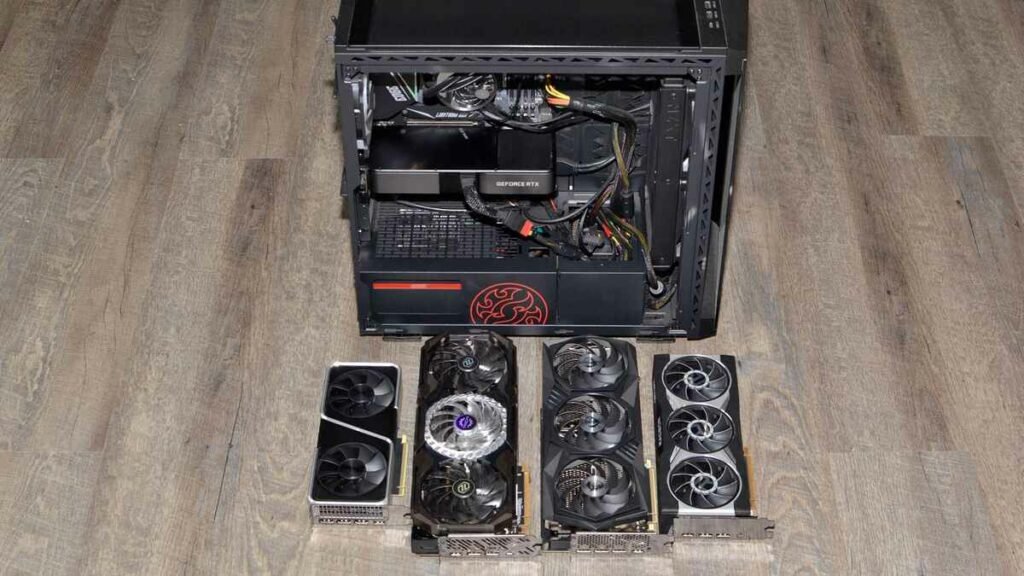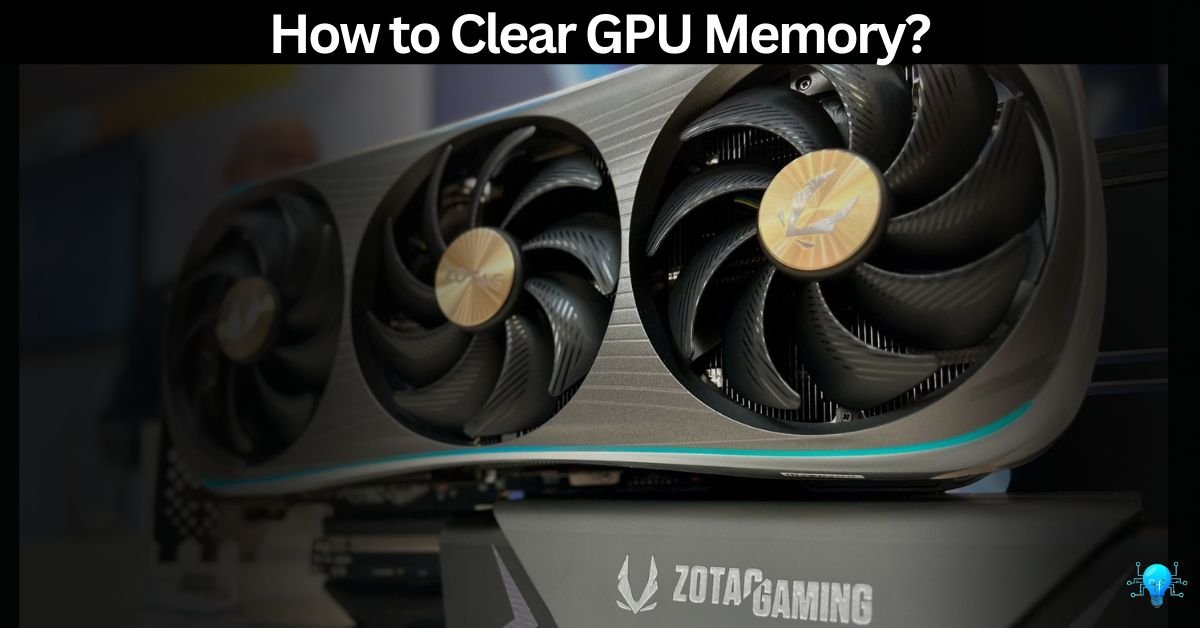To clear GPU memory, close unnecessary applications, update your GPU drivers, and restart your computer. Additionally, you can use GPU monitoring tools to identify and manage processes that are consuming excessive memory.
Clearing GPU memory is essential to ensure that your graphics card operates efficiently, particularly when dealing with high-demand applications or games. GPU memory, also known as VRAM (Video RAM), is dedicated to storing graphical data that your computer’s GPU needs to render images and videos.
How Much Storage Does GPU Have?
The storage capacity of a GPU, or VRAM, varies significantly based on the model and its intended use. Here’s a detailed breakdown:
- Entry-Level GPUs: Typically feature 2GB to 4GB of VRAM. These are suitable for casual gaming and everyday tasks.
- Mid-Range GPUs: Usually come with 4GB to 8GB of VRAM. These are ideal for most modern games at 1080p resolution with high settings.
- High-End GPUs: Often equipped with 8GB to 24GB of VRAM. Designed for 4K gaming, VR applications, and professional tasks like 3D rendering and video editing.
- For example, the NVIDIA GeForce RTX 3060 Ti features 8GB of VRAM, which is sufficient for 1440p gaming at high settings. In contrast, the NVIDIA GeForce RTX 4090 comes with a massive 24GB of VRAM, catering to 4K gaming and high-performance computing needs.
Have You Checked? GPU Power Consumption Drops
Steps to Clear GPU Memory:
Step 1: Close Unnecessary Applications
To free up GPU memory, start by closing any applications that are not in use. Background applications and processes can consume valuable GPU resources. For example, if you’re playing a game, make sure that any web browsers, video players, or other non-essential software are closed. This helps in reallocating GPU resources to the active application.
Step2: Update GPU Drivers
Keeping your GPU drivers up-to-date is crucial for optimal memory management. Manufacturers like NVIDIA and AMD frequently release updates that enhance performance and fix issues. Visit the NVIDIA GeForce Experience or AMD Radeon Software to check for and install the latest drivers. Updated drivers can improve memory management and fix any bugs affecting performance.
Step 3: Restart Your Computer
A simple restart can often resolve memory issues. Restarting your computer clears temporary files and resets system processes, including GPU memory. This step is particularly useful if you notice performance drops or unusual behavior after extended use. Restarting helps in clearing out residual data that may be clogging up the GPU memory.
Steps 4: Clear Cache
Many applications and games create temporary cache files that can consume GPU memory. Clearing these cache files can help free up memory. For example, in games like Fortnite or software like Adobe Photoshop, there are options to clear cache through the settings menu. Manually deleting cache folders can also help if the application does not provide an in-built option.
Step 5: Use Task Manager
On Windows, the Task Manager is a powerful tool for managing GPU memory usage. Open Task Manager by pressing Ctrl + Shift + Esc, and go to the “Performance” tab. Select “GPU” to view memory usage. Identify and end any tasks that are using excessive GPU memory by right-clicking on them and selecting “End Task.” This helps in freeing up GPU resources for more critical applications.
Steps 6: Use GPU Monitoring Tools
Specialized GPU monitoring tools like MSI Afterburner, GPU-Z, or HWMonitor provide detailed insights into GPU memory usage. These tools allow you to track real-time memory consumption and identify any applications or processes that are using more GPU memory than necessary. Monitoring tools can help you make informed decisions about clearing GPU memory and optimizing performance.
Must Read: What Is Normal GPU Usage While Gaming?
But What Makes GPU Memory Full? – The Reasons!
High-Resolution Textures
High-resolution textures in games and applications consume a lot of GPU memory. Titles like Cyberpunk 2077 use detailed textures that quickly use up VRAM.
Multiple Applications
Running several GPU-intensive applications simultaneously, such as games alongside video editing software or multiple browser tabs, can overload GPU memory.
Memory Leaks
Memory leaks occur when software doesn’t properly release unused GPU memory. Over time, this can fill up VRAM, leading to performance issues.
Background Processes
Background processes, like streaming services or system updates, can also consume GPU memory even if you’re not actively using them.
Complex Graphics and Effects
Complex graphics and effects, such as those in 3D rendering or virtual reality, require significant GPU memory. Advanced features like ray tracing and high-quality shaders can quickly use up VRAM.
Large-Scale Games and Software
Games and software with detailed environments or models, like Elden Ring, need more GPU memory to handle extensive textures and assets.
Must Explore: Can I Use a CPU Cable For GPU? – Warning!
Does a GPU Brand Matter for System’s Storage?
Yes, the GPU brand can affect how memory is managed and utilized
The brand of your GPU does not directly impact the amount of system storage, such as HDD or SSD space. While different GPU brands like NVIDIA and AMD offer various models with varying amounts of VRAM, which is dedicated memory on the graphics card, this does not affect your system’s overall storage capacity.

GPU brands influence performance and graphical efficiency, with each offering unique features and optimizations that enhance how well your system handles graphics-intensive tasks. However, the GPU itself does not change or affect the physical storage drives in your computer.
How Much Memory Is Needed to Run High-Quality Games on PC?
To run high-quality games efficiently, adequate GPU memory is crucial. Here’s a detailed look at the memory requirements for some popular games:
GPU Storage to Run Valorant
Valorant is a relatively lightweight game. It is designed to run smoothly on a wide range of systems. For playing Valorant at low to medium settings, a GPU with at least 1GB of VRAM is sufficient. However, for optimal performance and to avoid any potential lag, a GPU with 4GB of VRAM is recommended. This ensures smooth gameplay and stable frame rates.
GPU Memory to Run Roblox Smoothly Without Any Glitch
Roblox is not very demanding on GPU memory. A GPU with 1-2GB of VRAM is typically adequate to run Roblox smoothly. Most players won’t encounter significant performance issues with these specifications, even when running multiple games or complex user-generated content.
How Much Storage Is Required to Play Elden Ring Efficiently?
Elden Ring is a more demanding game. To play Elden Ring efficiently and ensure a smooth gaming experience, a GPU with at least 6GB of VRAM is recommended. For higher settings and resolutions, such as 1440p or 4K, a GPU with 8GB or more of VRAM will provide better performance and reduce potential stuttering.
GPU Capacity to Use Tarkov Without Lagging
Escape from Tarkov is known for its intensive graphics requirements. To avoid lag and ensure a smooth experience, a GPU with at least 6GB of VRAM is necessary. For playing at higher settings or resolutions, 8GB or more of VRAM is ideal, allowing for better texture quality and fewer performance issues.
GPU Memory to Run CS2 Properly
Counter-Strike 2 (CS2) requires a GPU with at least 2GB of VRAM for running on low settings. For higher settings and improved visual quality, a GPU with 4GB or more of VRAM is recommended. This ensures that the game runs smoothly without any graphical issues.
If you aren’t sure whether the game you are playing is CPU intensive or not, Then click the links inserted here and get redirected to the proper listed guide there for you guys.
Also Check Do Both Monitors Need To Be Connected To The GPU?
How Often Should I Upgrade My GPU?
The need to upgrade your GPU depends on your usage and performance requirements:
Gaming Enthusiasts: If you play the latest AAA games or use GPU-intensive applications, consider upgrading your GPU every 2-3 years to keep up with technological advancements and maintain high performance.
Casual Users: For users who mainly perform everyday tasks or play less demanding games, a GPU can last 4-5 years before needing an upgrade. Regular performance reviews and benchmarks can help determine if an upgrade is necessary.
Read Also: Do GPU Fans Always Spin? – Having Glitches While Playing?
Tips to Maintain GPU Memory:
- Regular Updates: Keep your GPU drivers and system software updated. Regular updates can improve performance and address memory-related issues. Check for updates through tools like NVIDIA GeForce Experience or AMD Radeon Software.
- Monitor Usage: Use tools to monitor GPU memory usage. Software like MSI Afterburner or GPU-Z can provide real-time data on memory consumption and help identify any abnormal usage patterns.
- Optimize Settings: Adjust game and application settings to balance performance and memory usage. Lowering resolution or texture quality can reduce memory load and improve overall performance.
- Clean System: Regularly clean your computer to prevent dust buildup, which can affect cooling efficiency and GPU performance. Ensure that your system’s airflow is unobstructed and consider using compressed air to remove dust from fans and vents.
Must Read: Can I Bring A GPU On A Plane? – 2024 Rules!
Frequently Asked Questions:
How can I improve GPU performance?
Update your GPU drivers, close unnecessary applications, and adjust game settings to optimize performance. Monitoring and managing GPU memory usage can also enhance overall performance.
Can clearing GPU memory improve game performance?
Yes, clearing GPU memory can free up resources that might be cluttered or misallocated, leading to improved game performance and stability.
Is it safe to overclock my GPU?
Overclocking can increase performance but also raises heat and power consumption. Ensure proper cooling and monitor temperatures to avoid damage. Overclocking should be done cautiously and with adequate cooling solutions.
Concluding The Discussion:
So, To clear GPU memory> close unused applications>update GPU drivers>and restart your computer. You can also use GPU monitoring tools to manage memory usage effectively.
By following the steps outlined in this guide and keeping your GPU in good condition, you can ensure a smoother experience in gaming and professional applications. Regular maintenance, updates, and monitoring will help keep your GPU running efficiently and effectively.\

